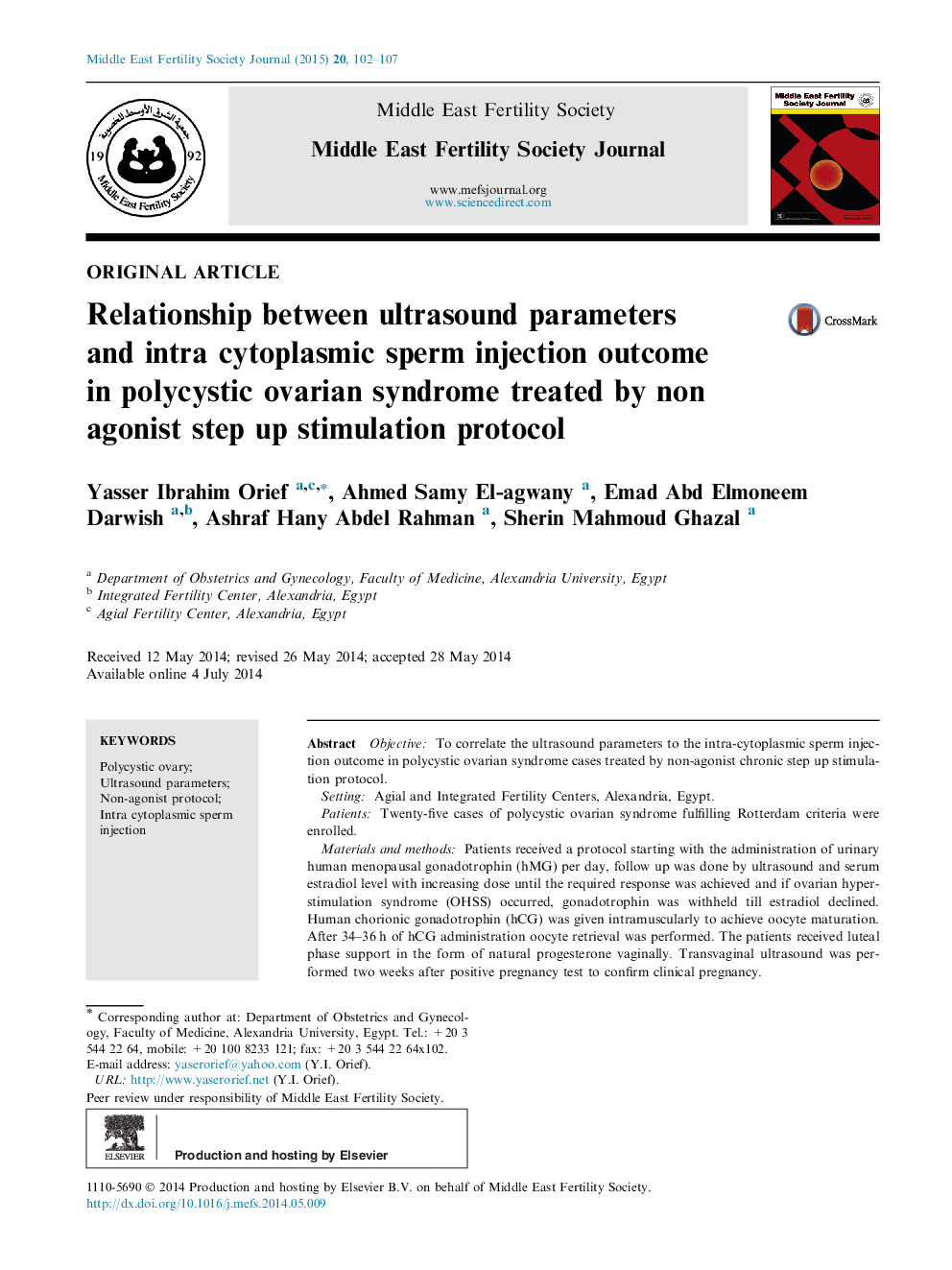| Article ID | Journal | Published Year | Pages | File Type |
|---|---|---|---|---|
| 3966131 | Middle East Fertility Society Journal | 2015 | 6 Pages |
ObjectiveTo correlate the ultrasound parameters to the intra-cytoplasmic sperm injection outcome in polycystic ovarian syndrome cases treated by non-agonist chronic step up stimulation protocol.SettingAgial and Integrated Fertility Centers, Alexandria, Egypt.PatientsTwenty-five cases of polycystic ovarian syndrome fulfilling Rotterdam criteria were enrolled.Materials and methodsPatients received a protocol starting with the administration of urinary human menopausal gonadotrophin (hMG) per day, follow up was done by ultrasound and serum estradiol level with increasing dose until the required response was achieved and if ovarian hyperstimulation syndrome (OHSS) occurred, gonadotrophin was withheld till estradiol declined. Human chorionic gonadotrophin (hCG) was given intramuscularly to achieve oocyte maturation. After 34–36 h of hCG administration oocyte retrieval was performed. The patients received luteal phase support in the form of natural progesterone vaginally. Transvaginal ultrasound was performed two weeks after positive pregnancy test to confirm clinical pregnancy.Main outcome measuresNumber of ampoules, stimulation days, serum estradiol level and progesterone level on day of hCG, number of oocytes retrieved, grading of embryos obtained, endometrial thickness, pregnancy rate, implantation rate, abortion rate, cancellation rate, multiple pregnancy rate and cost.ResultsPatients with a higher number of basal antral follicles were associated with a lower number of ampoules needed for stimulation (14.63 vs. 21.64 ampoules) and less stimulation days (7.07 vs. 10.73 days). Patients with a higher number of mature follicles were associated with a higher estrogen level (1561.53 vs. 658.14 pg/ml) and a higher progesterone level on day of hCG (1.10 vs. .62 ng/ml), a higher number of oocytes retrieved (7.18 vs. 4.13 oocytes) and a higher number of embryos transferred (3.06 vs. 2 embryos). The number of mature follicles and the endometrial thickness were higher in the pregnant group (19.78 follicles and 12.94 mm, respectively). The pregnancy rate was 36%, the chemical pregnancy rate was 33.3%, the abortion rate was 22.2% and the ongoing pregnancy rate was (44.4%).ConclusionsThe higher the number of the basal antral follicles, the less the number of the ampoules needed for stimulation and the less the stimulation days. The higher the number of mature follicles, the higher the estrogen level on day of hCG, the greater the number of oocytes retrieved and the greater the number of embryos transferred. The stromal thickness has no effect on the pregnancy outcome but the number of mature follicles and the endometrial thickness have a positive correlation with the pregnancy outcome.
